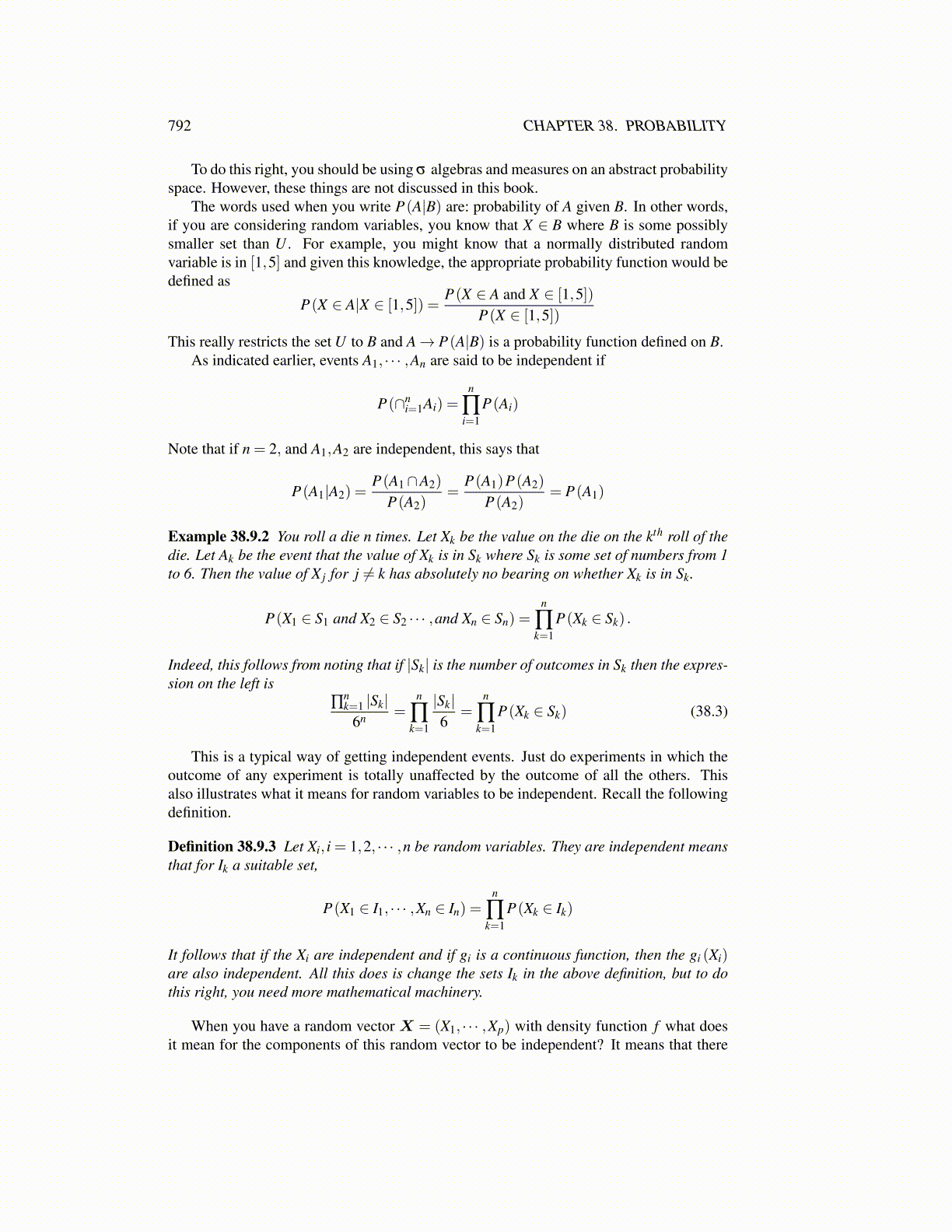
792 CHAPTER 38. PROBABILITY
To do this right, you should be using σ algebras and measures on an abstract probabilityspace. However, these things are not discussed in this book.
The words used when you write P(A|B) are: probability of A given B. In other words,if you are considering random variables, you know that X ∈ B where B is some possiblysmaller set than U . For example, you might know that a normally distributed randomvariable is in [1,5] and given this knowledge, the appropriate probability function would bedefined as
P(X ∈ A|X ∈ [1,5]) =P(X ∈ A and X ∈ [1,5])
P(X ∈ [1,5])
This really restricts the set U to B and A→ P(A|B) is a probability function defined on B.As indicated earlier, events A1, · · · ,An are said to be independent if
P(∩ni=1Ai) =
n
∏i=1
P(Ai)
Note that if n = 2, and A1,A2 are independent, this says that
P(A1|A2) =P(A1∩A2)
P(A2)=
P(A1)P(A2)
P(A2)= P(A1)
Example 38.9.2 You roll a die n times. Let Xk be the value on the die on the kth roll of thedie. Let Ak be the event that the value of Xk is in Sk where Sk is some set of numbers from 1to 6. Then the value of X j for j ̸= k has absolutely no bearing on whether Xk is in Sk.
P(X1 ∈ S1 and X2 ∈ S2 · · · ,and Xn ∈ Sn) =n
∏k=1
P(Xk ∈ Sk) .
Indeed, this follows from noting that if |Sk| is the number of outcomes in Sk then the expres-sion on the left is
∏nk=1 |Sk|
6n =n
∏k=1
|Sk|6
=n
∏k=1
P(Xk ∈ Sk) (38.3)
This is a typical way of getting independent events. Just do experiments in which theoutcome of any experiment is totally unaffected by the outcome of all the others. Thisalso illustrates what it means for random variables to be independent. Recall the followingdefinition.
Definition 38.9.3 Let Xi, i = 1,2, · · · ,n be random variables. They are independent meansthat for Ik a suitable set,
P(X1 ∈ I1, · · · ,Xn ∈ In) =n
∏k=1
P(Xk ∈ Ik)
It follows that if the Xi are independent and if gi is a continuous function, then the gi (Xi)are also independent. All this does is change the sets Ik in the above definition, but to dothis right, you need more mathematical machinery.
When you have a random vector X = (X1, · · · ,Xp) with density function f what doesit mean for the components of this random vector to be independent? It means that there